 |
Satish Lele lelepiping@gmail.com |
View this page as YouTube Video Presentation
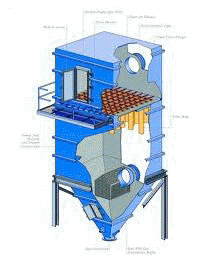
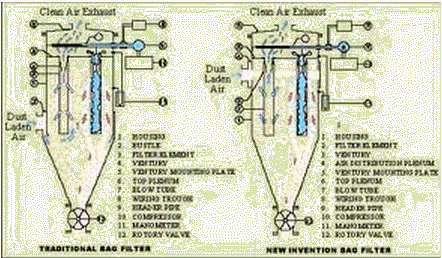
In an online bag filter, bags are cleaned row by row, even when the dust laden gas is filtered. The sequence of cleaning is controlled automatically by a sequence controller. This operates the assembly of solenoid and pulse valves which direct the air flow into the manifolds. The holes are jig drilled for perfect alignment with the venturi center for achieving maximum cleaning efficiency.
Regular Hopper Entry: The pulsejet bag filter in its most rudimentary form, consists of filtration elements encased in housing. Below this casing is a hopper with a discharge valve, to remove the dust that is collected on the bags. The entire unit is supported from the ground on structural legs. A caged ladder provides access to the top of the unit for maintenance. Dust laden air enters through the hopper by suction (normally on positive pressure). The heavier dust particles fall off at the entry itself, while the lighter dust gets carried upward to the bags. The dust gets deposited on the outer surface of the bags and clean air moves out from the center of the bags and escapes out from top air outlet. This is known as filtration. The dust collected on the outer surface of bag is removed in a pre-determined cycle by a momentary pulse of high-pressure compressed air. The compressed air moves from an air reservoir or compressed air header, via the particular pulse valve into the compartment manifold and thereon into the bags, in the row beneath it. Due to the pressured entry of compressed air into the bags, the bags get inflated. Thus the dust is collected on the bag as flakes falls down. Soon the bag comes back to its original position and the cleaning process is completed. Dust flakes fall from the sides of the hopper and slide into the rotary air lock valve. As the valve travels clockwise, the dust trapped in between the vanes gets discharged from the opening below.
Twin Train – Extended Hopper: In the on-line Twin Train type of unit, the dirty gas enters the common inlet plenum, formed as an aisle between the two filter modules. From there it flows to both the modules; and undergoes filtration as in the regular unit. The cleaned gases travel back to the common outlet plenum from the individual clean air plenums, and then flow out through the outlet duct to the ID fan.
Casing Entry: Here the dirty gas enters the casing through the inlet-cum-bypass damper, if applicable, into a central chamber formed by perforated sheets. The gas flow towards the bags is partially upwards from below the sheets, and partially through the perforations, ensuring the separation of heavier dust and better gas distribution respectively. The lighter dust gets carried upward to the bags. This gets deposited on the outer surface of the bags and is removed by a pre-determined cycle by a momentary pulse of high pressure compressed air as in a typical hopper entry type of bag filter.
Pre-separator Casing with Baffle: As the cement industry has started installing bigger size cement plants, conventional bag filters have been found to be inadequate to handle large gas flows in excess of 6,00,000 m3/hr, due to severe limitations like high gas flow per bag, high velocity of gases through bag filter, higher pressure drop across filters, high space requirement due to bigger size filters and high compressed air consumption.
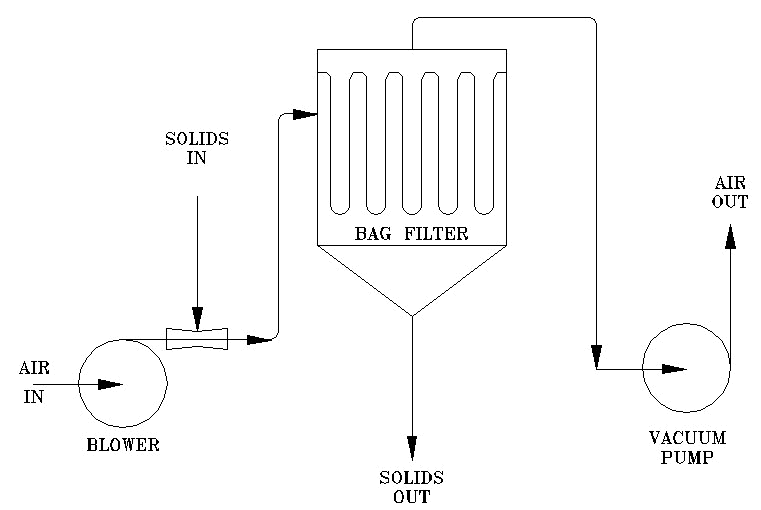
Low pressure air cleaning system: The Pulse Jet Bag Filter (PJBF) design incorporates a specialized low pressure cleaning system that offers following distinct advantages over conventional bag filters, with high pressure cleaning system.
- These include:
- Lower pressure drop across the unit
- Lower consumption of cleaning compressed air
- Longer filter bag life
- Lower noise level during operation
- This system is designed to achieve:
- Highly efficient & quick pulse of cleaning air
- Lower pressure drop of cleaning air due to elimination of bend in pulsing system
- Effective Flushing of dust
- Effectively flushes the bag & reduces re-deposition of fine dust
- Can clean bags up to 10 meters length
- Cleans the internal of the filter media to have lower longer term pressure drops
- The filter media is not flexed as extensively as in the conventional cleaning, thus increasing the media life
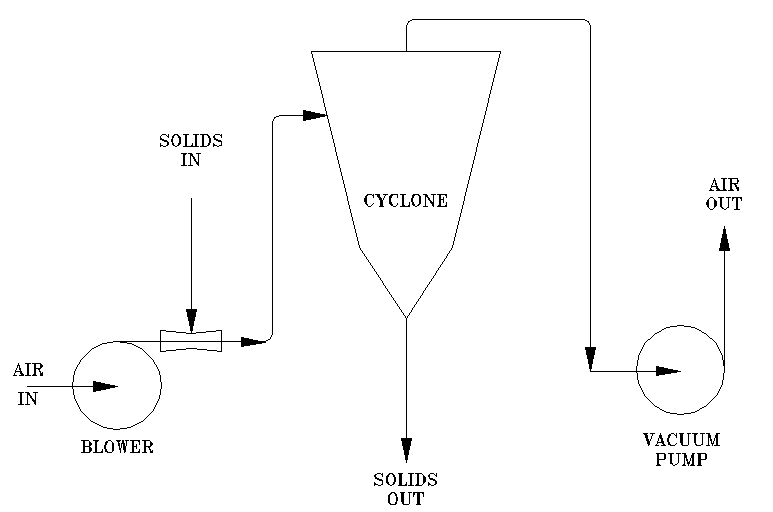
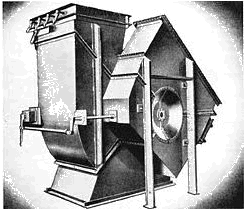 Induced Draft: (ID) fans are used to create a vacuum or negative air pressure in a system or stack. Centrifugal blowers are used to maintain elevated ventilation, resulting in increased system efficiency. Extractor fans are typically heavy duty construction to handle particulate in the
air stream. In the boiler industry ID Fans are often used in conjunction with FD fans to maintain system pressure which is slightly lower than ambient.
Induced Draft: (ID) fans are used to create a vacuum or negative air pressure in a system or stack. Centrifugal blowers are used to maintain elevated ventilation, resulting in increased system efficiency. Extractor fans are typically heavy duty construction to handle particulate in the
air stream. In the boiler industry ID Fans are often used in conjunction with FD fans to maintain system pressure which is slightly lower than ambient.Forced Draft: (FD) fans purpose is to provide a positive pressure to a system. This basic concept is used in a wide variety of industries but the term FD Fans is most often found in the boiler industry. Fans for boilers force ambient air into the boiler, typically through a preheater to increase overall boiler efficiency. Inlet or outlet dampers are used to control and maintain the system pressure. Typical fan arrangements utilize a wheel center hung on the shaft with integral inlet boxes.
 to get all the information as a eBook
to get all the information as a eBook
